Charles M. Kozierok The TCP-IP Guide
Подождите немного. Документ загружается.

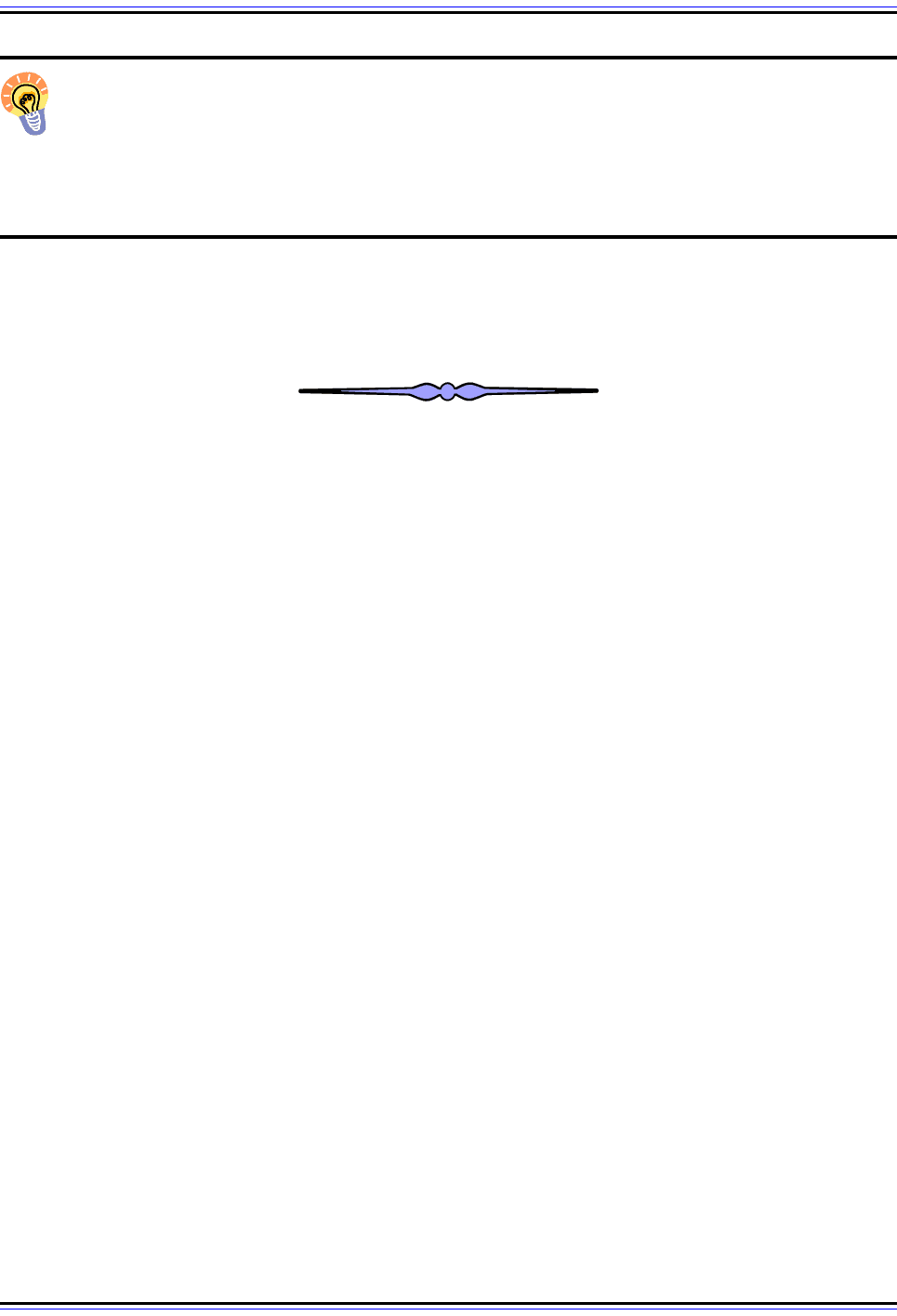
The TCP/IP Guide - Version 3.0 (Contents) ` 1311 _ © 2001-2005 Charles M. Kozierok. All Rights Reserved.
Key Concept: Since URNs identify resources by name rather than location, they are
a more natural way of identifying resources than using URLs. Unfortunately, this
advantage is also a disadvantage, since URNs don’t, by themselves, provide a user
with the necessary information to find the resource so it can be used. A process of URN
resolution must be performed to transform the URN into a set of information that allows the
resource to be accessed.
Although progress on URNs has been slow, it has been steady. While it may yet be a few
years before URNs are widely used, I believe it is likely that they will play an increasingly
prominent role in identifying resources on the Internet in the future.
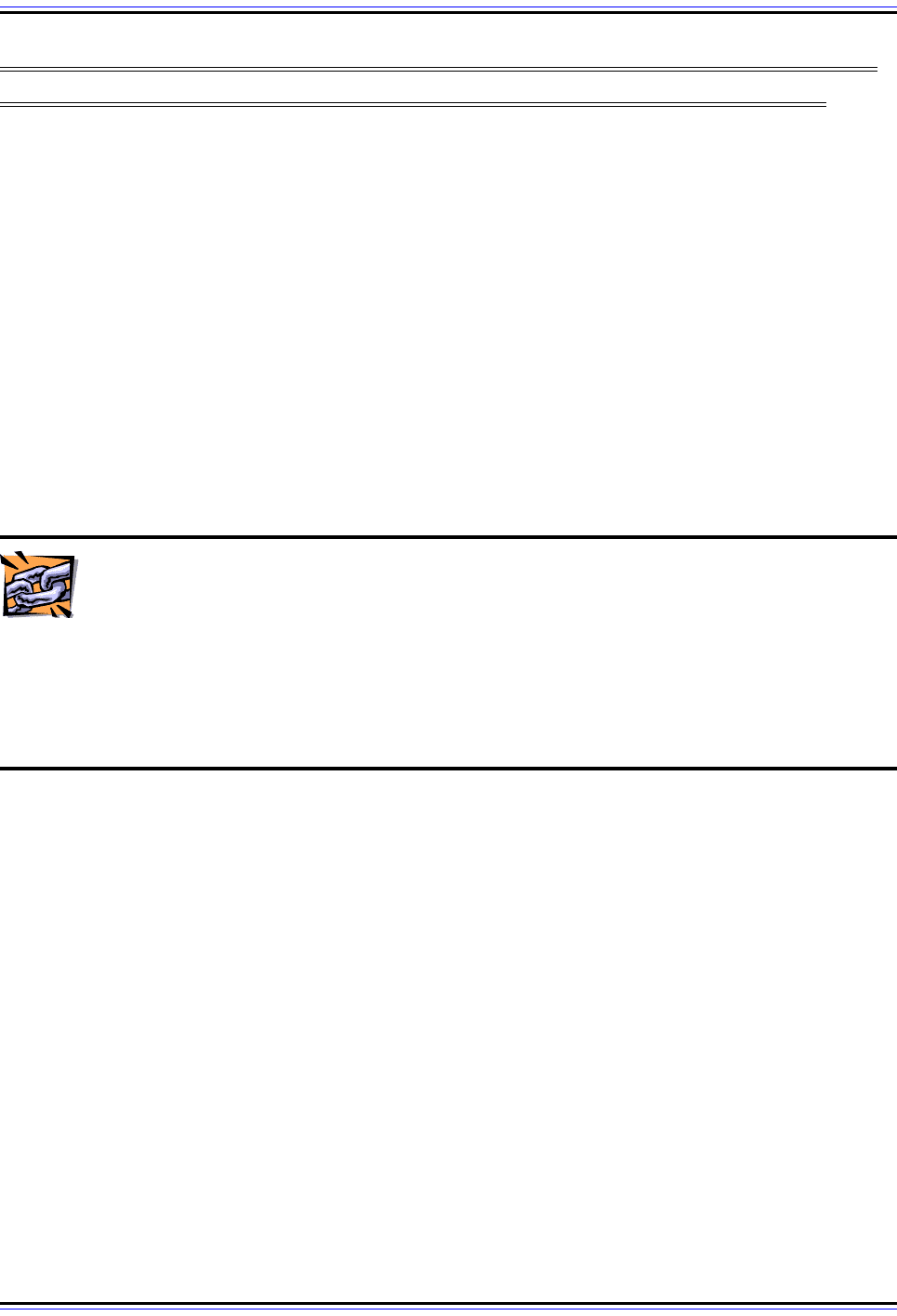
The TCP/IP Guide - Version 3.0 (Contents) ` 1312 _ © 2001-2005 Charles M. Kozierok. All Rights Reserved.
TCP/IP File and Message Transfer Applications and Protocols
(FTP, TFTP, Electronic Mail, USENET, HTTP/WWW, Gopher)
The purpose of networking applications is to allow different types of information to be sent
between networked devices. In the world of computers, information is most often arranged
into discrete units called files. When those files are created specifically for the purpose of
communication, they are often called messages. One of the most important groups of TCP/
IP applications is the one that describes the basic mechanisms for moving these files
between internetworked devices: file and message transfer applications.
In this section I describe in detail the most important applications used in TCP/IP for file and
message transfer, and the protocols that implement them. I begin with an overview of these
applications, and a description of the differences between them. I then include four subsec-
tions that describe the four most important file/message transfer application families:
explicit file transfer, electronic mail, network news (Usenet) and hypertext (the World Wide
Web). I also provide a brief look at the Gopher protocol, which has fallen out of favor but is
worth a quick mention, especially due to its role as an historical precursor of the Web.
Related Information: I have made the decision to draw a distinction between
application protocols that are normally used explicitly by a user to move
messages and files, and those that are used implicitly to share files. The former
usually use specific commands to transfer data and are described in this section. The latter
work by creating the appearance to the user that a file on a remote device is actually local,
by transmitting commands and data over the network automatically, and are described in a
separate section on network file and resource sharing protocols. In TCP/IP, this sharing
function is most often performed by the Network File System (NFS).

The TCP/IP Guide - Version 3.0 (Contents) ` 1313 _ © 2001-2005 Charles M. Kozierok. All Rights Reserved.
File and Message Transfer Overview and Application Categories
I said in the introduction to this section that file and message transfer applications are one
of the most important types used in TCP/IP. Transferring files between networked
computers is the most basic type of network communication. In fact, it wouldn't even be an
exaggeration to say that this may be the most important class of internetworking applica-
tions. Some of the members of this group are so common that many people use them every
day without even thinking about it.
To understand these applications, let's first take a quick step back to look at the funda-
mental concept of a “file”. Simply put, a file is just a collection of information that is treated
as a single unit by a computer system. Files are stored in directories or folders in a file
system. In modern computers, files are normally expressed as a sequence of bytes or
characters, and each file is read, written, copied or otherwise manipulated as an
independent object. In addition to the data it contains, each file has associated with it file
attributes that describe it.
For our purposes, the critical characteristic of a file is that it is a self-contained object
carrying arbitrary information. Since files are the building blocks of information in computer
systems, it's no surprise that the transfer of information in networking was originally defined
in terms of the movement of these files. Some of the protocols describing how to transfer
files predate all of the modern protocols in the lower levels of TCP/IP, including IP version 4,
TCP and UDP. It's not the case that file transfer was an early application of internetworking,
but that internetworking was invented in large part to permit file transfer!
Files in modern computing systems are inherently designed to be generic; they can contain
any type of information. The significance of the contents of a file depends entirely on the
user or software program that examines it. The TCP/IP file and message transfer protocols
have in common the notion of moving files from one computer to another. Where they differ
is in how the files are handled and processed. There are two basic approaches: general file
transfer, and message transfer.
General File Transfer
General transfer applications normally treat the file as a “black box”, moving them from
place to place and paying little or no attention to what the files contain. The TCP/IP File
Transfer Protocol (FTP) and Trivial File Transfer Protocol (TFTP) fall into this category. FTP
has been around in one form or another for over 30 years now and is still widely used.
Message Transfer
Other TCP/IP applications work with particular types of files, processing and interpreting
them in various ways. These files are usually designed for the specific purpose of communi-
cation, and are thus called messages; these applications allow users to construct, send and
receive messages that fit a particular message format. There are several prominent TCP/IP
messaging applications we'll examine in this Guide:
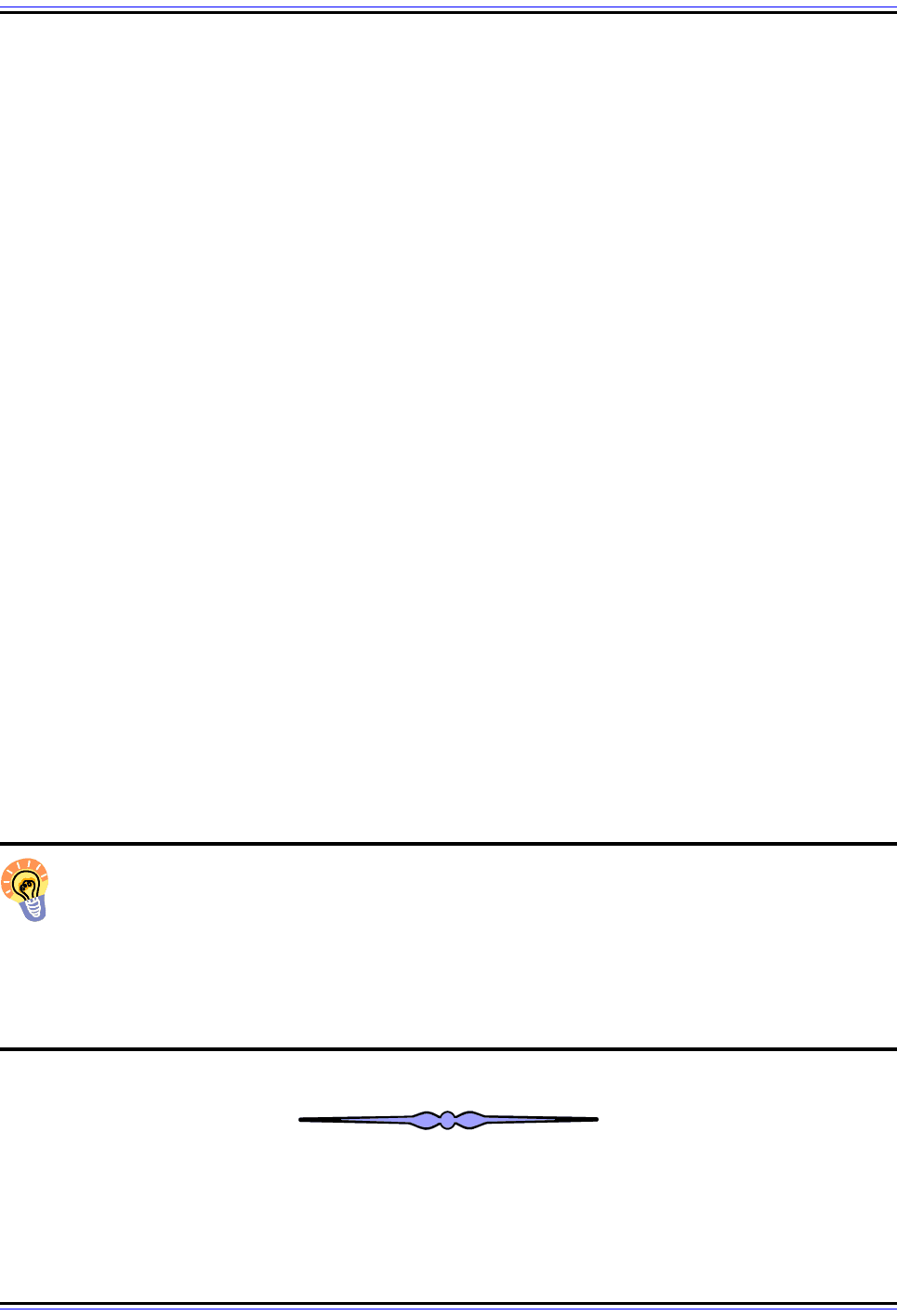
The TCP/IP Guide - Version 3.0 (Contents) ` 1314 _ © 2001-2005 Charles M. Kozierok. All Rights Reserved.
☯ Electronic Mail (E-Mail): A system that allows users to exchange “letters” (in fact any
type of document) in a manner equivalent to the conventional postal system, but with
the advantages of great speed and simplicity. Electronic mail has not replaced regular
mail entirely, but many people now use it for the vast majority of their correspondence.
☯ Network News (Usenet): An application that is like electronic mail in that it allows
users to send messages. However, while e-mail is normally used to allow a message
to be sent to one user or a small number of recipients, network news is a way for
thousands of users to share messages on various topics. Any user can contribute a
message that can be seen by others, any of whom can respond. Unlike the case with
e-mail, recipients do not need to be explicitly identified, which makes network news far
more suitable to communication amongst large groups of people who may not even
know each other. This was one of the first TCP/IP applications to create something like
an “electronic bulletin board”: an online community.
☯ Hypertext (World Wide Web): You probably don't even need me to explain what the
World Wide Web is, such is its great significance in modern internetworking. Hypertext
moves the idea of messaging beyond the simple exchange of text messages or plain
files, to the notion of rich messages that can contain a variety of types of information.
This includes text, graphics, multimedia and embedded files. Most importantly,
hypertext allows one document to be linked to another, forming the “web” of related
documents that led to the name “World Wide Web”. The Web is almost certainly the
single most important TCP/IP application, used daily by millions of people.
Each of these applications was at one point somewhat distinct, but in recent years a
number of developments have caused the lines between them to become greatly blurred.
Electronic mail is no longer limited to simple text messages; it can now be used to carry
general files by encoding them into text form using special methods, and even to carry
hypertext documents. World Wide Web clients (browsers) continue to be enhanced to let
them access other types of servers and files, and can also be used for general file transfer.
These developments all mean even more functionality and flexibility for the TCP/IP user—
and a bit more care required on the part of the TCP/IP learner.
Key Concept: One of the most important groups of TCP/IP applications is the one
that enables files to be moved between devices on an internetwork: file and message
transfer applications. This group contains many of the common applications that
TCP/IP users employ every day to communicate. It can be broken into two main categories:
general file transfer applications that are used to move any type of file between devices,
and message transfer applications, which allow different types of communication using
special file types, such as electronic-mail messages or hypertext files.
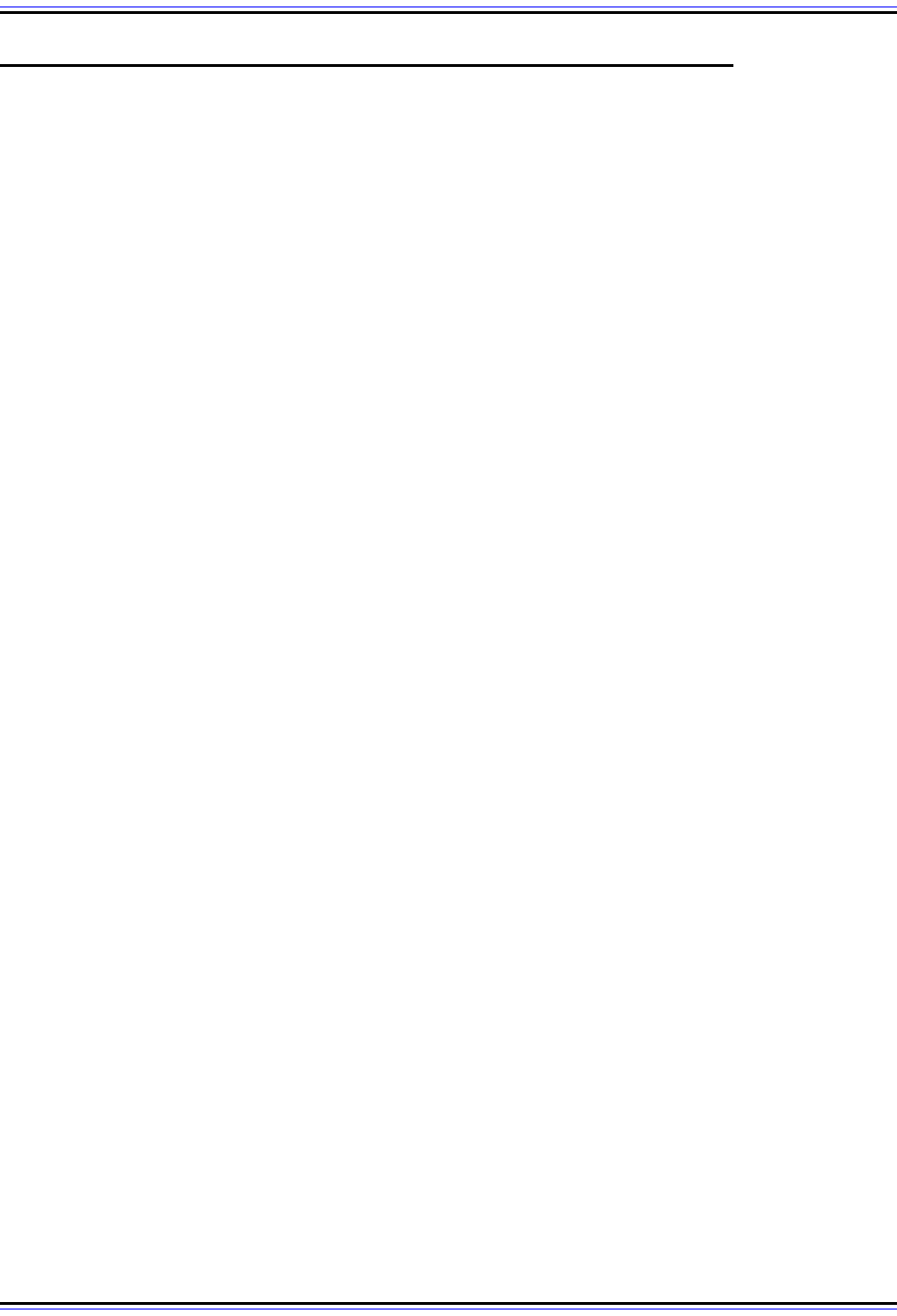
The TCP/IP Guide - Version 3.0 (Contents) ` 1315 _ © 2001-2005 Charles M. Kozierok. All Rights Reserved.
TCP/IP General File Transfer Protocols (FTP and TFTP)
As I mentioned in the preceding overview of file and message transfer protocols, they
represent the most basic type of network communication: the simple movement of blocks of
data. Of the many file and message transfer methods, the most fundamental application is
what I call general file transfer. General file transfer protocols perform one main function:
allowing files to be copied from one computer to another.
Since file transfer protocols move files from place to place without considering their
contents much, they are relatively “unsophisticated” compared to certain message-
processing applications. However, the idea of being able to move files around is so
important that general file transfer protocols were one of the very first applications in inter-
networking. While many people now use electronic mail or Web browsers to perform the
functions formerly performed exclusively using general file transfer, these older protocols
are still very important and widely used, and important to understand.
In this section I take a look at the two TCP/IP general file transfer protocols. The first is
called simply the File Transfer Protocol (FTP). The second is called the Trivial File Transfer
Protocol (TFTP). Each is described in its own subsection.
The relationship between FTP and TFTP is similar to that of the Transmission Control
Protocol (TCP) and User Datagram Protocol (UDP) at layer four. FTP is full-featured,
session-oriented and somewhat complex. It is the more often-used of the two protocols,
providing a full command interface and taking advantage of the reliability and stream
transfer functions of TCP, over which it runs. TFTP, like the UDP it uses at the transport
layer, is a “stripped down” version of FTP. It has far fewer commands and capabilities than
FTP, but is ideal for cases where simplicity and small software program size is important,
such as embedded software in devices.
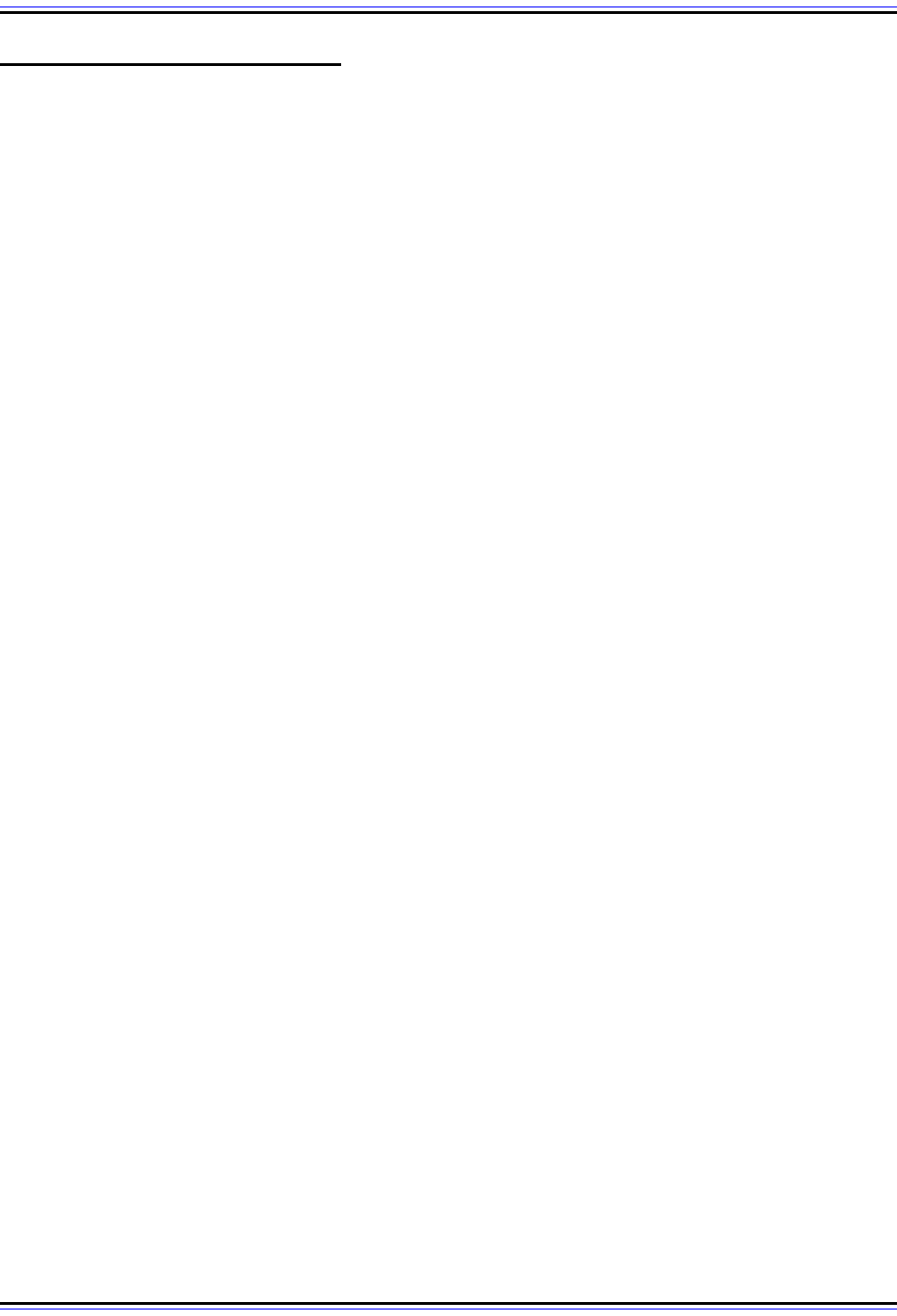
The TCP/IP Guide - Version 3.0 (Contents) ` 1316 _ © 2001-2005 Charles M. Kozierok. All Rights Reserved.
File Transfer Protocol (FTP)
The primary general file transfer protocol in the TCP/IP suite shows its “generality” directly
through its unqualified name: the File Transfer Protocol (FTP). FTP is one of the most
widely used application protocols in the world. It was designed to allow the efficient transfer
of files between any two devices on a TCP/IP internetwork. It automatically takes care of
the details of how files are moved, provides a rich command syntax to allow various
supporting file operations to be performed (such as navigating the directory structure and
deleting files) and operates using the TCP transport service for reliability.
In this section I describe the operation of the File Transfer Protocol. I begin with an overview
of FTP, a discussion of its long history and the standards that define it. I then describe how
FTP works in two subsections. The first discusses the key concepts behind how FTP
functions and discusses its operation in general terms. The second provides specific details
of FTP commands and reply codes. Finally, I provide a sample illustration of a user FTP
session showing the internal commands used for each action.

The TCP/IP Guide - Version 3.0 (Contents) ` 1317 _ © 2001-2005 Charles M. Kozierok. All Rights Reserved.
FTP Overview, History and Standards
The TCP/IP protocol suite as we know it today was developed in the late 1970s and early
1980s, with the watershed event probably the publishing of the version 4 standards of the
Internet Protocol and Transmission Control Protocol in 1980. Modern TCP/IP was the result
of experimentation and development work that had been underway since the 1960s. This
work included both the design and implementation of the protocols that would implement
internetworks, and also the creation of the first networking applications to allow users to
perform different tasks.
FTP Development and Standardization
The developers of early applications conceptually divided methods of network use into two
categories: direct and indirect. Direct network applications let a user access a remote host
and use it as if it were local, creating the illusion that the network doesn't even exist (or at
least, minimizing the importance of distance). Indirect network use meant getting resources
from a remote host and using them on the local system, then transferring them back. These
two methods of use became the models for the first two formalized TCP/IP networking
applications: Telnet for direct access and the File Transfer Protocol (FTP) for indirect
network use.
The first FTP standard was RFC 114, published in April 1971, before TCP and IP even
existed. This standard defined the basic commands of the protocol and the formal means
by which devises communicate using it. At this time the predecessor of TCP (called simply
the Network Control Protocol or NCP) was used for conveying network traffic. There was no
Internet back then. Its precursor, the ARPAnet, was tiny, consisting of only a small group of
development computers.
A number of subsequent RFCs refined the operation of this early version of FTP, with
revisions published as RFC 172 in June 1971 and RFC 265 in November 1971. The first
major revision was RFC 354, July 1972, which for the first time contained a description of
the overall communication model used by modern TCP, and details on many of the current
features of the protocol. In subsequent months many additional RFCs were published,
defining features for FTP or raising issues with it. RFC 542, August 1973, the FTP specifi-
cation looks remarkably similar to the one we use today, over three decades later, except
that it was still defined to run over NCP.
After a number of subsequent RFCs to define and discuss changes, the formal standard for
modern FTP was published in RFC 765, File Transfer Protocol Specification
, June 1980.
This was the first standard to define FTP operation over modern TCP/IP, and was created
at around the same time as the other primary defining standards for TCP/IP.
RFC 959, File Transfer Protocol (FTP), was published in October 1985 and made some
revisions to RFC 765, including the addition of several new commands, and is now the base
specification for FTP. Since that time a number of other standards have been published that
define extensions to FTP, better security measures and other features. (Some of these are
discussed in the general operation section in the appropriate places.)
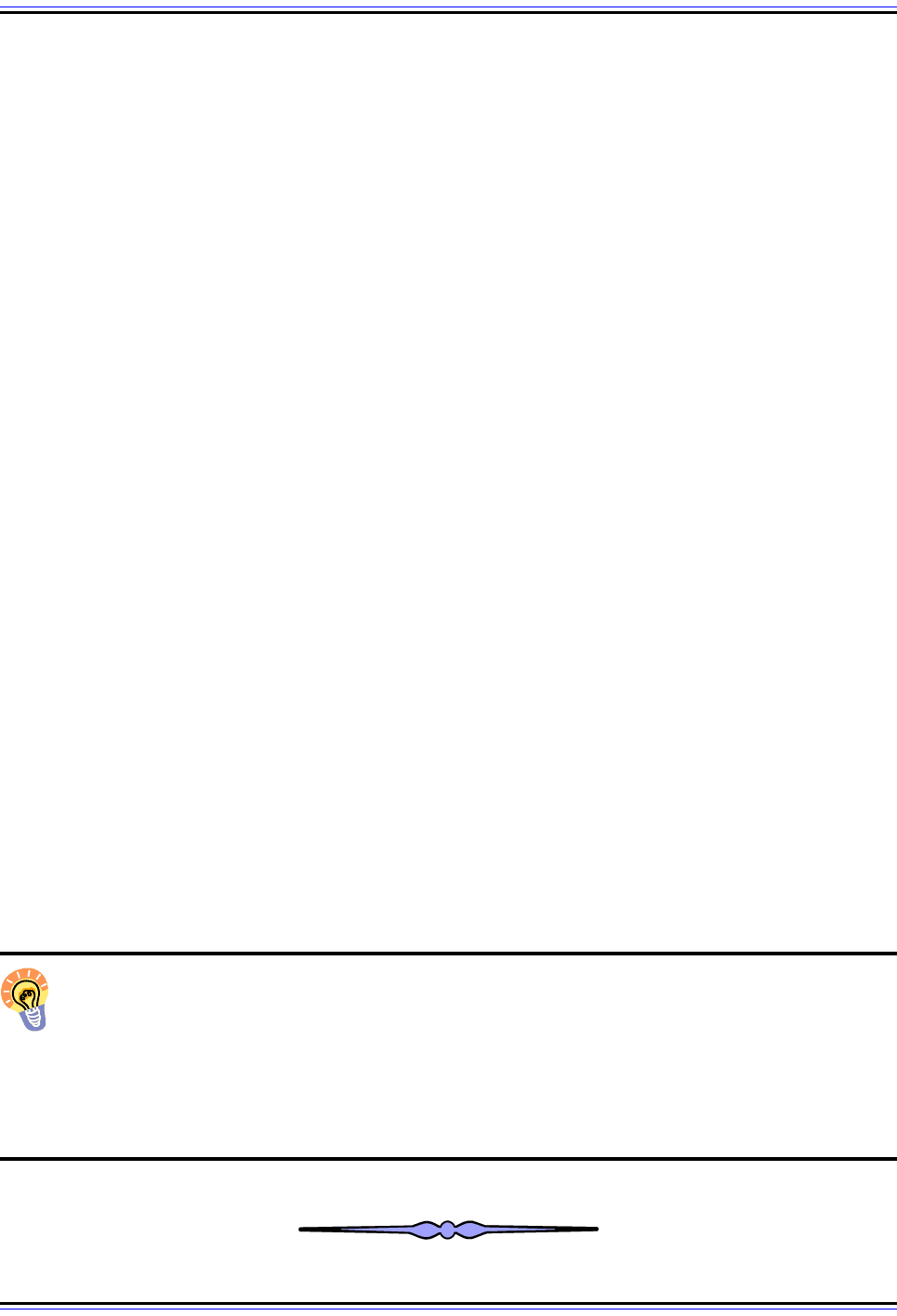
The TCP/IP Guide - Version 3.0 (Contents) ` 1318 _ © 2001-2005 Charles M. Kozierok. All Rights Reserved.
Overview of FTP Operation
FTP was created with the overall goal of allowing indirect use of computers on a network,
by making it easy for users to move files from one place to another. Like most TCP/IP
protocols, it is based on a client/server model, with an FTP client on a user machine
creating a connection to an FTP server to send and retrieve files to and from the server. The
main objectives of FTP were to make file transfer simple, and to shield the user from imple-
mentation details of how the files are actually moved from one place to another. To this end,
FTP is designed to automatically deal with many of the issues that can potentially arise due
to format differences in files stored on differing systems.
To ensure that files are sent and received without loss of data that could corrupt them, FTP
uses the reliable Transmission Control Protocol (TCP) at the transport layer. An authenti-
cation system is used to ensure that only authorized clients are allowed to access a server.
At the same time, a feature sometimes called anonymous FTP allows an organization that
wishes it to set up a general information server to provide files to anyone who might want to
retrieve them.
After a TCP connection is established, an FTP control connection is created. Internal FTP
commands are passed over this logical connection based on formatting rules established
by the Telnet protocol. Each command sent by the client receives a reply from the server to
indicate whether it succeeded or failed. A data connection is established for each individual
data transfer to be performed. FTP supports either normal or passive data connections,
allowing either the server or client to initiate the data connection. Multiple data types and file
types are supported to allow flexibility for various types of transfers.
The interface between an FTP user and the protocol is provided in the form of a set of inter-
active user commands. After establishing a connection and completing authentication, two
basic commands can be used to send or receive files. Additional support commands are
provided to manage the FTP connection, as well as to perform support functions such as
listing the contents of a directory or deleting or renaming files. In recent years, graphical
implementations of FTP have been created to allow users to transfer files using mouse
clicks instead of memorizing commands. FTP can also be used directly by other applica-
tions to move files from one place to another.
Key Concept: The most important general file transfer protocol in TCP/IP is the
simply-named File Transfer Protocol (FTP). The need to be able to move files of any
type between machines is so fundamental that FTP’s history goes back more than
30 years. FTP runs over TCP, to ensure that files are transferred reliably with no data loss.
The protocol uses a set of FTP commands sent from an FTP client to an FTP server to
perform file transfer operations; the FTP server sends to the client FTP replies that indicate
the success or failure of commands.

The TCP/IP Guide - Version 3.0 (Contents) ` 1319 _ © 2001-2005 Charles M. Kozierok. All Rights Reserved.
FTP Concepts and General Operation
The developers of the File Transfer Protocol (FTP) had to balance the need for a rich set of
functionality with the desire for a protocol that was as simple and easy to implement as
possible. FTP is therefore not nearly as simple as its “little brother”, the Trivial File Transfer
Protocol (TFTP), but given what the protocol can do, it's much less complicated than one
might expect. The operation of the protocol can in fact be broken down into a number of
rather straight-forward elements that work together to establish connections and pass
commands and data.
In this section I describe the most important concepts behind the File Transfer Protocol and
explain its operation in general terms. I begin with a discussion of the FTP communication
and operational model, which shows the internal components of the protocol and how they
communicate over the internetwork. I describe the process by which FTP control connec-
tions are established, and how user authentication is performed. I explain the two main
methods of creating data connections (normal and passive) and discuss the issues that
pertain to when each is used. I then describe how FTP communication works in general and
the various transmission modes. I conclude with a discussion of the different options for
data representation used for files sent with FTP.
Related Information: In this section I will make limited mention of commands
used to communicate between an FTP client and server. The details of FTP
commands can be found in a separate section.
FTP Operational Model, Protocol Components and Key Terminology
The standards that define the File Transfer Protocol (FTP) describe its overall operation
using a simple conceptual tool called the FTP model. This model defines the roles of the
devices that participate in a file transfer, and the two communication channels that are
established between them. It also describes the components of FTP that manage these
channels, and defines the terminology used for the components. This makes it an ideal
place for us to see how FTP works in broad terms.
The Server-FTP Process and User-FTP Process
FTP is a classical client/server protocol, as I mentioned in the overview. However, the client
is not called by that name but rather is called the user. The name comes from the fact that
the human user that issues FTP commands works on the client machine. The full set of
FTP software operating on a device is called a process. The FTP software on the server is
called the Server-FTP Process, while the software on the client is the User-FTP Process.
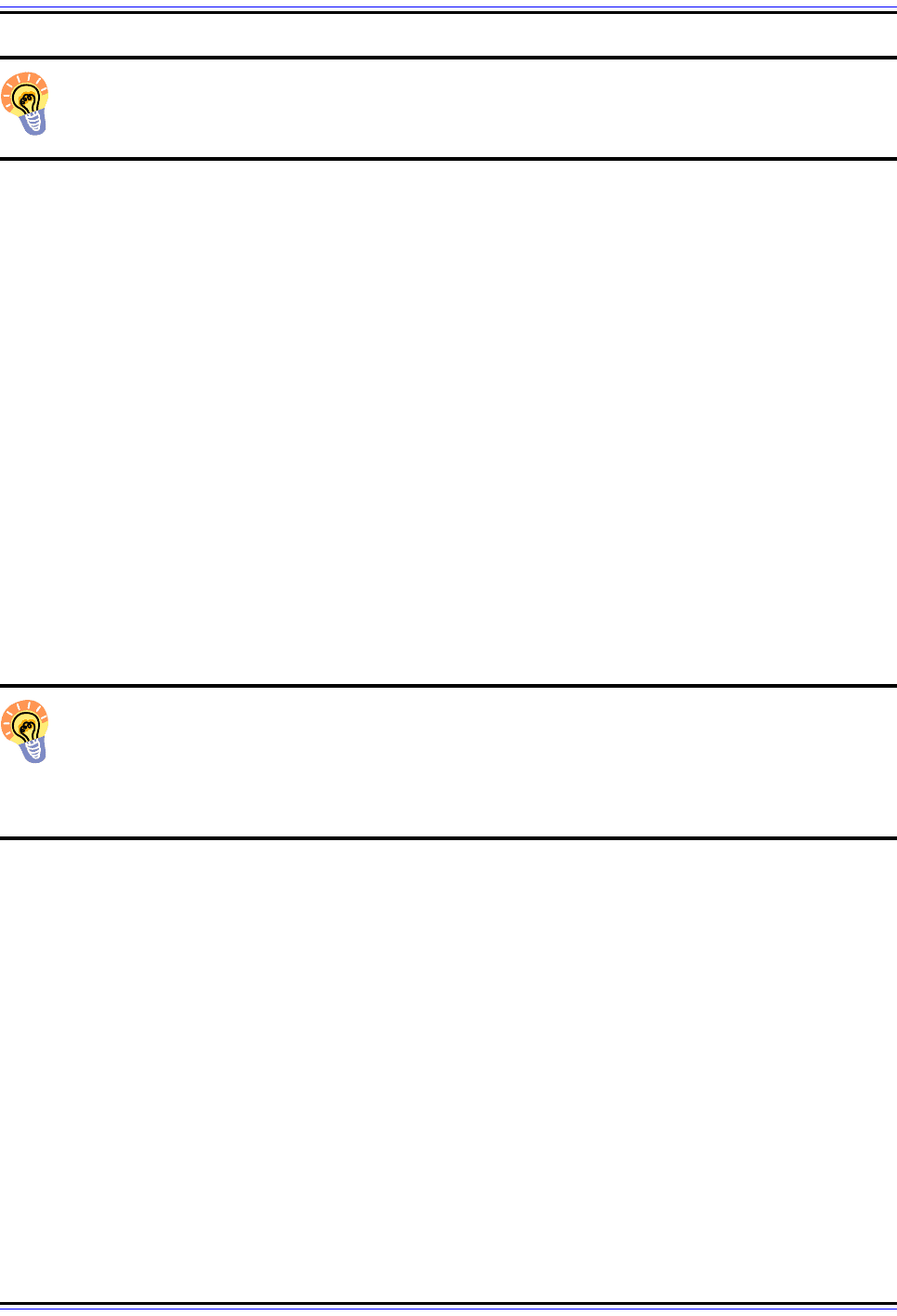
The TCP/IP Guide - Version 3.0 (Contents) ` 1320 _ © 2001-2005 Charles M. Kozierok. All Rights Reserved.
Key Concept: The FTP client is sometimes called the user device, since the human
user interacts with the client directly. The FTP client software is called the User-FTP
Process; the FTP server software, the Server-FTP Process.
FTP Control Connection and Data Connection
A critical concept in understanding FTP is that while it uses TCP like many other applica-
tions, it does not use just one TCP connection for all communication the way most
protocols do. The FTP model is designed around two logical channels of communication
between the server and user FTP processes:
☯ Control Connection: This is the main logical TCP connection that is created when an
FTP session is established. It is maintained throughout the FTP session and is used
only for passing control information, such as FTP commands and replies. It is not used
to send files.
☯ Data Connection: Each time that data is sent from the server to the client or vice-
versa, a distinct TCP data connection is established between them. Data is transferred
over this connection. When the file transfer is complete, the connection is terminated.
The reason for having these separate channels is that it provides flexibility in how the
protocol is used, as we will see later in this section. It does, however, add complexity to
FTP.
Key Concept: Unlike most protocols, FTP does not use a single TCP connection.
When a session is set up, a permanent control connection is established using TCP,
for passing commands and replies. When files or other data are to be sent, they are
passed over separate TCP data connections that are created and then dismantled as
needed.
FTP Process Components and Terminology
Since the control and data functions are communicated using distinct channels, the FTP
model divides the software on each device into two logical protocol components that are
responsible for each channel. The protocol interpreter (PI) is a piece of software that is
charged with managing the control connection, issuing and receiving commands and
replies. The data transfer process (DTP) is responsible for actually sending and receiving
data between the client and server. In addition to these two elements, the user FTP process
includes a third component, a user interface, that interacts with the human FTP user; it is
not present on the server side.
